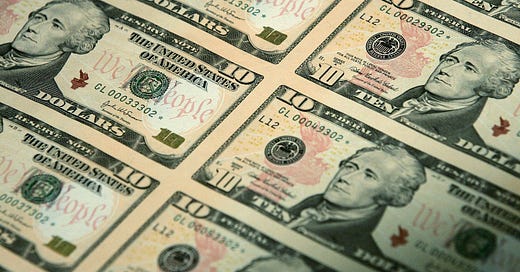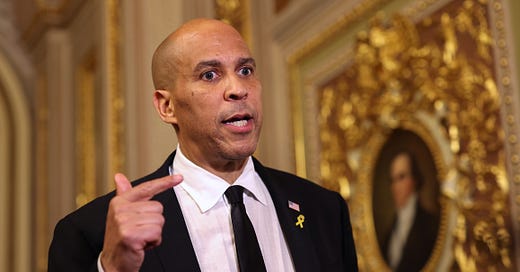
COVID-19 and the Costs of Unsteady Administration
The new executive orders are just the latest example of chaotic, uncertainty-inducing leadership at a moment that demands the opposite.
Advocates for presidential power often invoke Alexander Hamilton’s original defense of “energy in the executive”: It is “a leading character in the definition of good government.” But at moments like these, it is good to read his paragraph a little further.
As the famous Federalist 70 goes on to explain, an “energetic” presidency isn’t a constitutional virtue in and of itself; rather, like any form of energy, presidential energy is a constitutional good when it is channeled to good constitutional ends. In Hamilton’s time, as in ours, the clearest need for presidential energy was “the protection of the community against foreign attacks.” But, Hamilton added, we also need presidential energy for “the steady administration of the laws.” This is a theme that deserves more consideration these days.
President Trump’s latest batch of executive actions, issued in response to COVID-19’s economic impacts, were energetic. But they do not exemplify “steady administration”—if anything, they exemplify the constitutional harm of unsteady administration.
The president issued these orders as a substitute for actual legislation—an action that, as Yuval Levin and I have noted, raises constitutional problems in and of itself. That is not to say that the orders are illegal; in fact, Josh Blackman and Daniel Hemel have both written to explain how the orders are specifically based on pre-existing statutory authorizations, including the federal statute authorizing the president to defer the obligation of “employment” taxes for “a period up to 1 year.” Trump’s rejection of a meaningful legislative process, declaring instead the wholesale non-enforcement of the federal government’s payroll tax collections, undermines well-functioning constitutional institutions but avoids violating the law per se.
But by abandoning the effort to construct a legislative solution for the problem at hand, and instead simply announcing a six-month deferral of payroll taxes using an older statute written in broad terms, President Trump raised more questions than he answered. Payroll taxes are deferred but not eliminated, meaning that taxpayers and employers have no idea whether their accumulated tax bills will actually come due on December 31. And, as the New York Times’s Jim Tankersley reports, this could also have collateral effects on people’s income taxes.
So an executive action purporting to give people more economic security is, instead, actually creating significant uncertainty—which President Trump promptly attempted to leverage by declaring, from his New Jersey golf course, that “if I’m victorious on November 3rd, I plan to forgive these taxes and make permanent cuts to the payroll tax.”
The world is already uncertain enough. As it happens, that is why the Constitution created a presidency capable of leading through crises, and why Congress has legislated myriad statutes vesting presidents with vaguely defined powers to act in emergencies. Written in general terms, those statutes—like the constitutional provision vesting the president with “the executive power”—leave room for presidents to take action to help repel the crisis and alleviate the public’s uncertainty.
To Hamilton, this was not a peripheral constitutional issue, but the very crux of constitutionalism. Describing the sorts of presidents that (he hoped) the Electoral College would produce, Hamilton observed that “the true test of a good government is its aptitude and tendency to produce a good administration.” The point was so important that Hamilton quoted himself, several essays later, to reiterate it. A good constitutional government would be the government that tends to produce a good administration, and a good administration would be energetic but steady administration.
Steady administration is primarily the president’s responsibility, but our Constitution’s other features were intended to reinforce it. The legislative process was intended to translate (and moderate) the public’s competing values and interests into written law; the judicial branch would help to ensure that written laws would actually govern the government and the people themselves; the House’s “power over the purse” would protect the people against “the overgrown prerogatives of the other branches of the government”; and the Senate’s power to grant or deny its “advice and consent” to the president’s selection of executive branch leadership would help to create an administration capable carrying out the president’s decisions but not so passively as to be merely “obsequious instruments of his pleasure.” This last one, the Senate’s crucial share in the power and responsibility for staffing up the executive branch’s leadership, was seen by Hamilton as especially important for “contribut[ing] to the stability of the administration.”
Just as “steady administration” is the responsibility for all parts of our government, its absence at this moment reflects a failure of many of them: of Congress generally, for failing to enact timely legislation for the crisis at hand; of the Senate specifically, for not taking more seriously its advice-and-consent responsibilities over the last three years. But most of all the president, who responds to crisis not by alleviating its uncertainties, but rather amplifying them.
So what would “steady administration” look like in the current crisis? First and foremost, Congress would seek out points of common ground on which to legislate policy solutions suited to the specific economic and public-health issues now confronting us. Second, to the extent that laws leave the president with significant discretion, he would work to promulgate policies that make it easier—not harder—for people to plan their own lives, and thus would eschew policies as inherently unstable as this payroll-tax-delay gambit. Relatedly, third, to the extent that the administration’s policies depend on the assistance of intervening third parties (such as employers), the administration would work quickly to respond to their questions and concerns, further clarifying the legal and practical questions surrounding the administration’s policies.
If Hamilton was right about “the true test of a good government” being “its aptitude and tendency to produce a good administration,” we need to understand the present crisis of governance, exacerbating the crises of public health and economic stability, for what it is: a test of our Constitution itself, and of the men and women who swore oaths to defend it.










